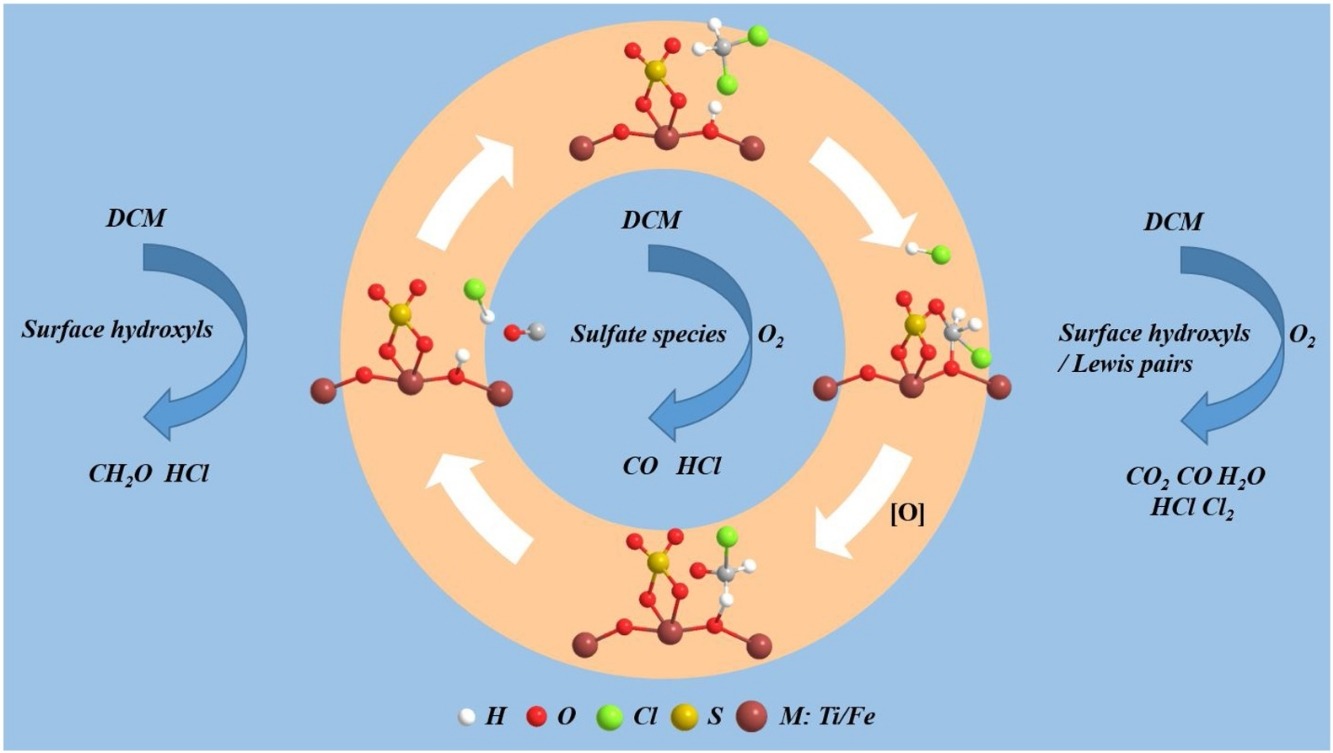博文
CVOCs催化燃烧净化取得新进展,硫酸根促进的超强酸催化剂,发表于Applied Catalysis A
||
https://www.sciencedirect.com/science/article/pii/S0926860X21001083
Oxidative decomposition of dichloromethane over sulfated iron titanate catalysts: Catalytic performance and reaction mechanism

夏航琦,戴启广,王幸宜
Highlights
•Sulfation of Ti-Fe mixed oxide promotes strong acidity and redox properties.
•The serial catalysts are highly active in the oxidation of dichloromethane.
•Three reaction pathways for dichloromethane decomposition have been found to exist.
•The sulfate involved reaction pathway goes through intermediate of COHCl.
•F-doped model catalyst selectively blocked the surface hydroxyls and Lewis acid sites.
Abstract
Iron titanate catalysts prepared by sol-gel method and modified by different amounts of SO42- were investigated in catalytic oxidation of dichloromethane (DCM). In situ DRIFT spectra revealed three different pathways for DCM decomposition over the serial catalysts, with active sites of hydroxyls, Lewis pairs and Brønsted acid-sulfate sites, respectively, verified by the designed experiments. Specifically, over sulfate-Brønsted sites, DCM decomposed through reaction intermediate of COHCl, which directly converted to CO and HCl. Sulfation of iron titanate significantly promoted the acidity and reaction activity, with great reaction stability provided by sulfate species and reproducible Brønsted acid sites.

https://blog.sciencenet.cn/blog-3913-1277209.html
上一篇:[转载]碳中和目标下挥发性有机物污染协同防治技术年会
下一篇:“服役一代、研制一代、预研一代、探索一代”与学术研究